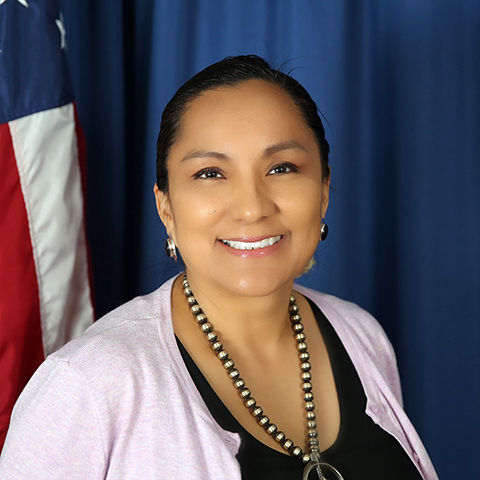In honor of National Domestic Violence Awareness Month, October 18 has been designated as Wear Purple Day. Indian Health Service staff are encouraged to wear purple on this day as it represents a symbol to show support of domestic violence survivors.
Talking about domestic violence or intimate partner violence is not easy. Domestic violence and intimate partner violence can occur in all communities and affect all people regardless of socioeconomic status, age, sexual orientation, gender, race, or religion. Although domestic violence affects everyone, women experience a higher rate of domestic violence and sexual assault than men. The effects of domestic violence can occur across generations and last a lifetime.
The Indian Health Service Division of Behavioral Health has a partnership with the StrongHearts Native Helpline . StrongHearts is a safe, anonymous and confidential service for Native Americans affected by domestic violence and dating violence. The hotline is also funded by a grant from the Administration for Children and Families , a division of the Department of Health and Human Services . The StrongHearts staff offers culturally appropriate resources and support in helping Native American people recognize the difference between a healthy relationship and abuse, as well as a safety plan when needed. StrongHearts Native Helpline is available, at no cost, by calling 1-844-7NATIVE (1-844-762-8483), Monday through Friday from 9:00 am to 5:30 pm central time. Callers reaching out after normal hours have the option to connect with the National Domestic Violence Hotline or call back the next business day.
What is domestic violence or intimate partner violence?
Domestic violence is a repetitive pattern of abusive behavior within an intimate relationship involving a spouse, significant other or partner. Intimate partner violence is often described as physical, sexual, or psychological harm or injury caused by a current or former partner or spouse.
Domestic violence can also include one or more types of abuse , including but not limited to physical, emotional, cultural/spiritual, sexual, financial, or digital abuse.
- More than half of American Indian and Alaska Native women (55.5 percent) and two in five Native men (43.2 percent) have experienced physical violence by an intimate partner.
- More than three in five American Indian and Alaska Native women (66.4 percent) and about three in four Native men (73 percent) have experienced psychological aggression by an intimate partner.
- Nearly half of American Indian and Alaska Native women (48.8 percent) and one in five Native men (18.6 percent) have experienced stalking.
- More than one in three American Indian and Alaska Native female victims (38 percent) and more than one in six Native male victims (17 percent) were unable to get the supportive services that they needed.
- Lifetime estimate, physical violence by intimate partners among American Indian and Alaska Native women were 55.5 percent compared to Non-Hispanic White Only, 34.5 percent.
- Lifetime estimate, physical violence by intimate partners among American Indian and Alaska Native men were 43.2 percent compared to Non-Hispanic White Only, 30.5 percent.
Learn how to recognize Domestic Violence
- Learn how to recognize abuse and respond to domestic violence or intimate partner violence by looking for warning signs and various types of abuse .
- Recognize the different red flags of abuse that can appear at any time in a relationship.
Resources
- StrongHearts Native Helpline, 1-844-7NATIVE (1-844-762-8483).
- National Indigenous Women’s Resource Center
- National Domestic Violence Hotline at 1-800-799-7233 or TTY 1-800-787-3224.
- National Center for Victims of Crime 1-855-4-VICTIM (1-855-484-2846).
Becoming aware of domestic violence and intimate partner violence is important for all of us. Our friends and families may need help in recognizing domestic violence. Offering help can save lives and prevent abuse in our communities.
Related content:
Domestic Violence Prevention Initiative



